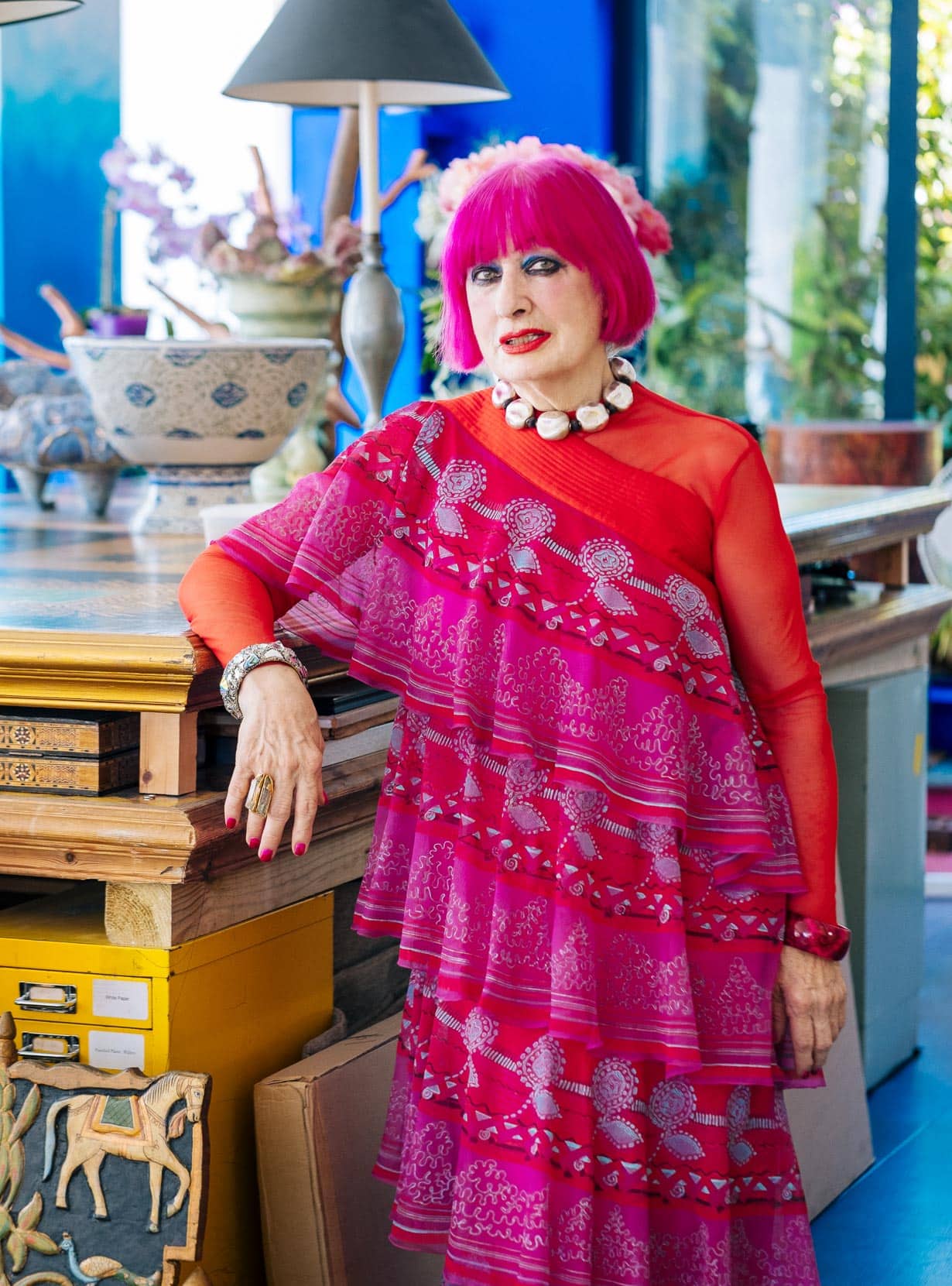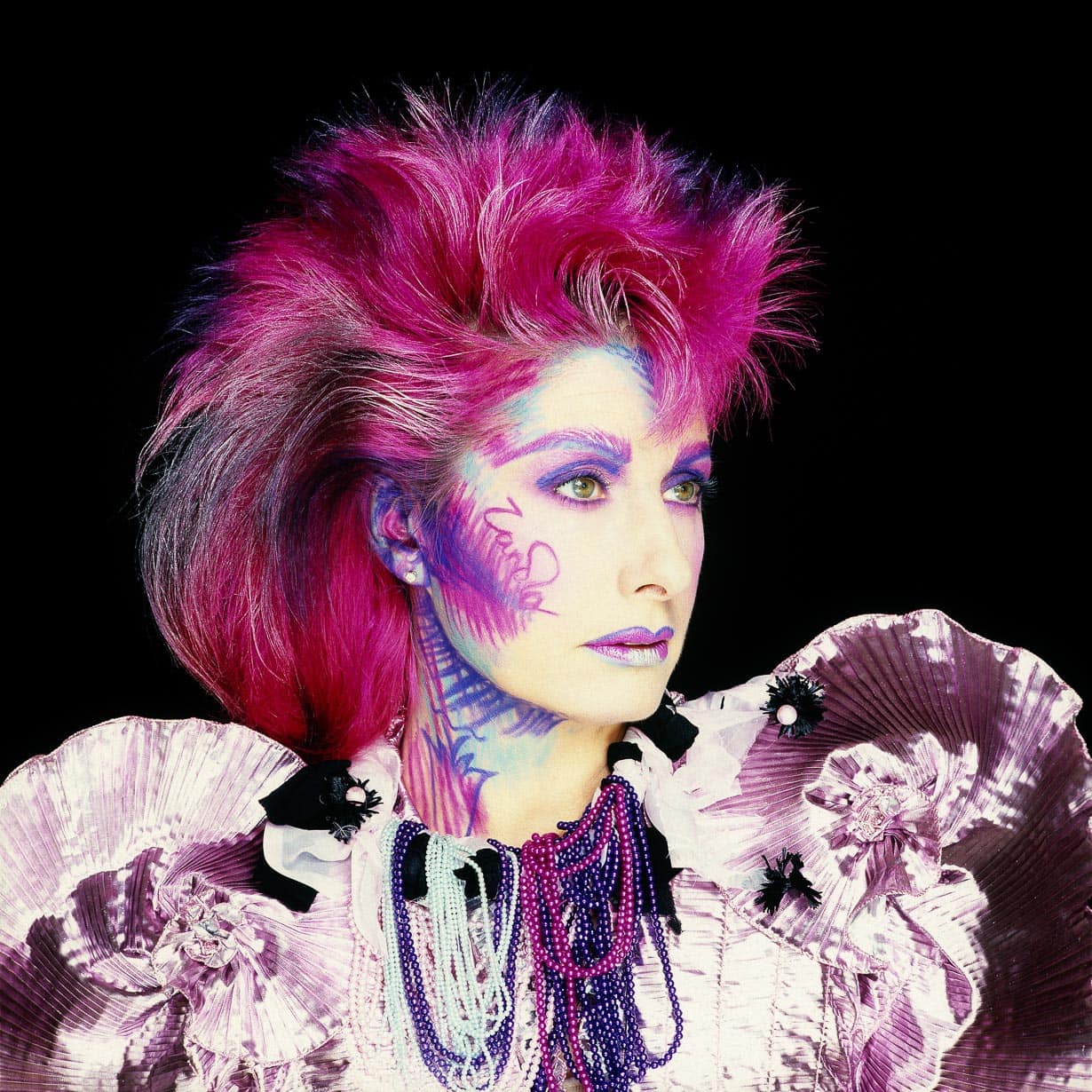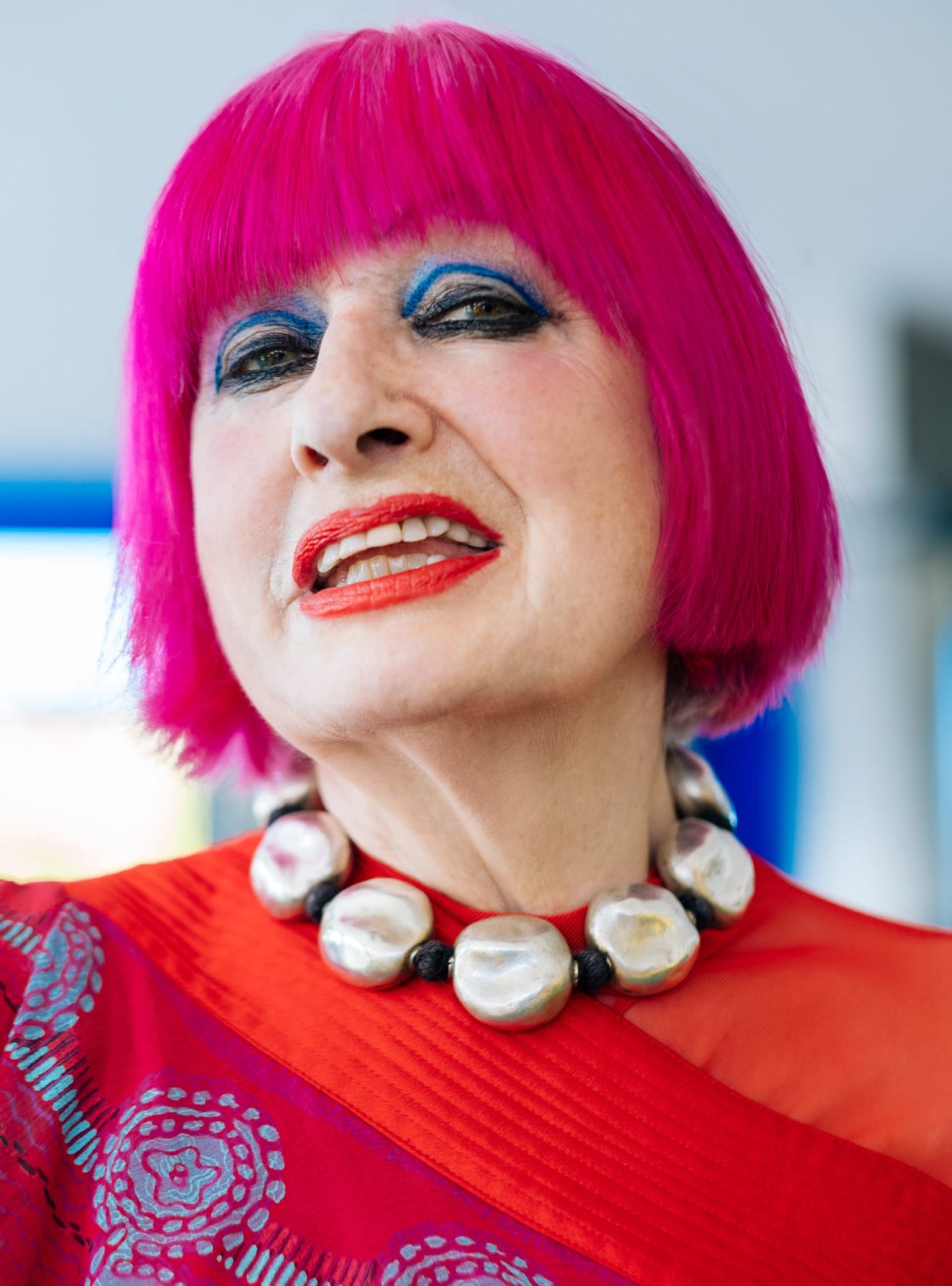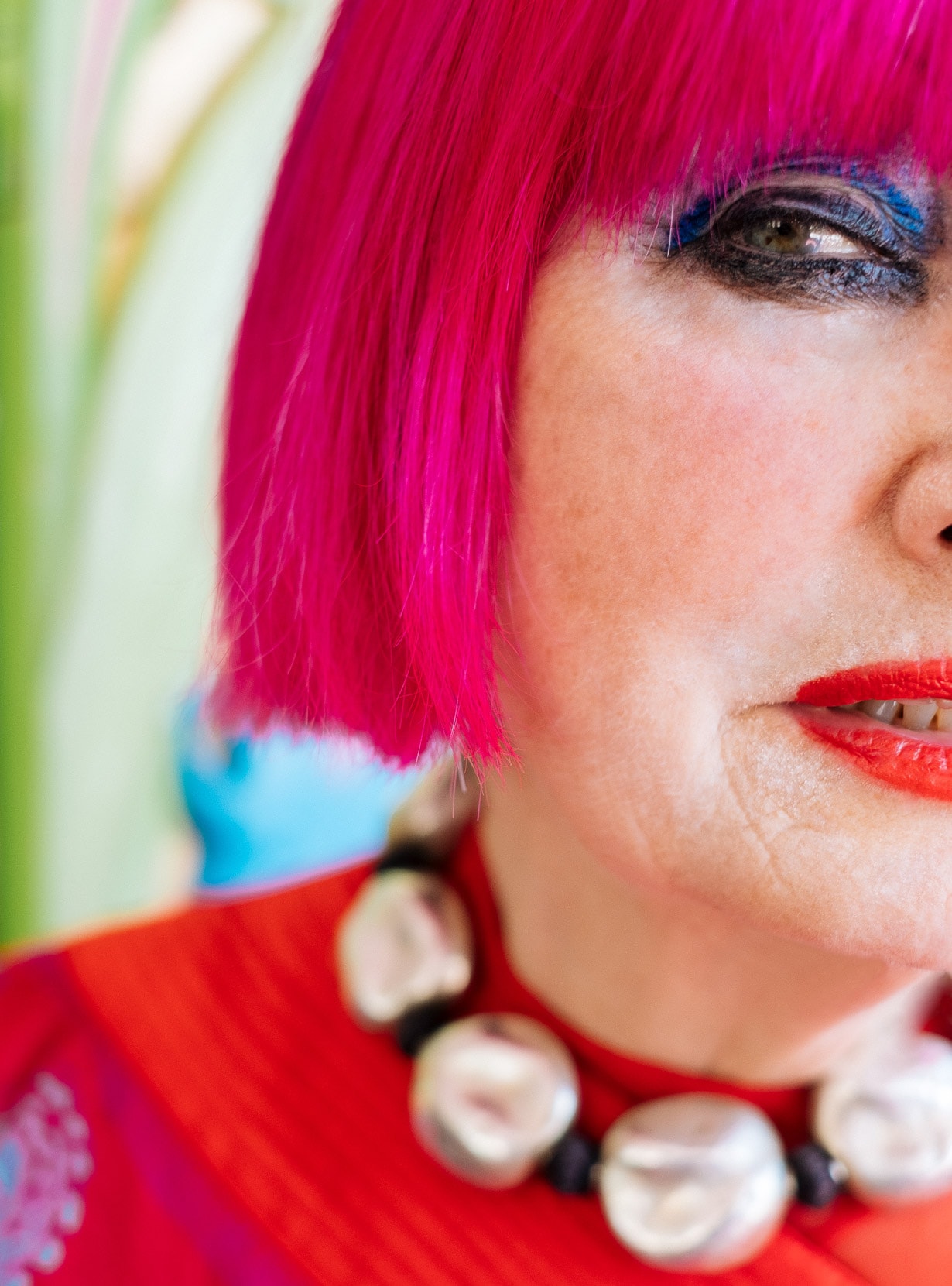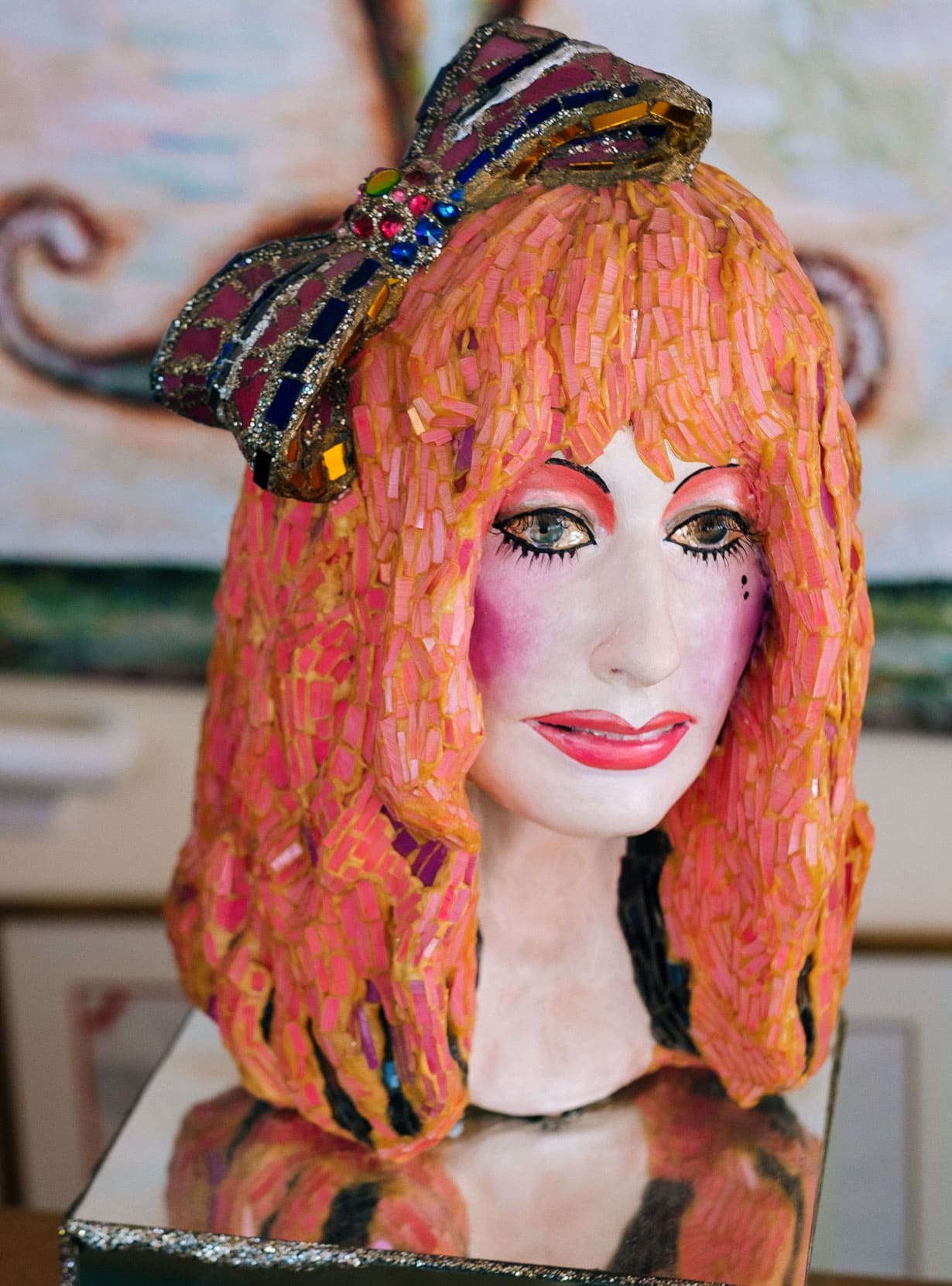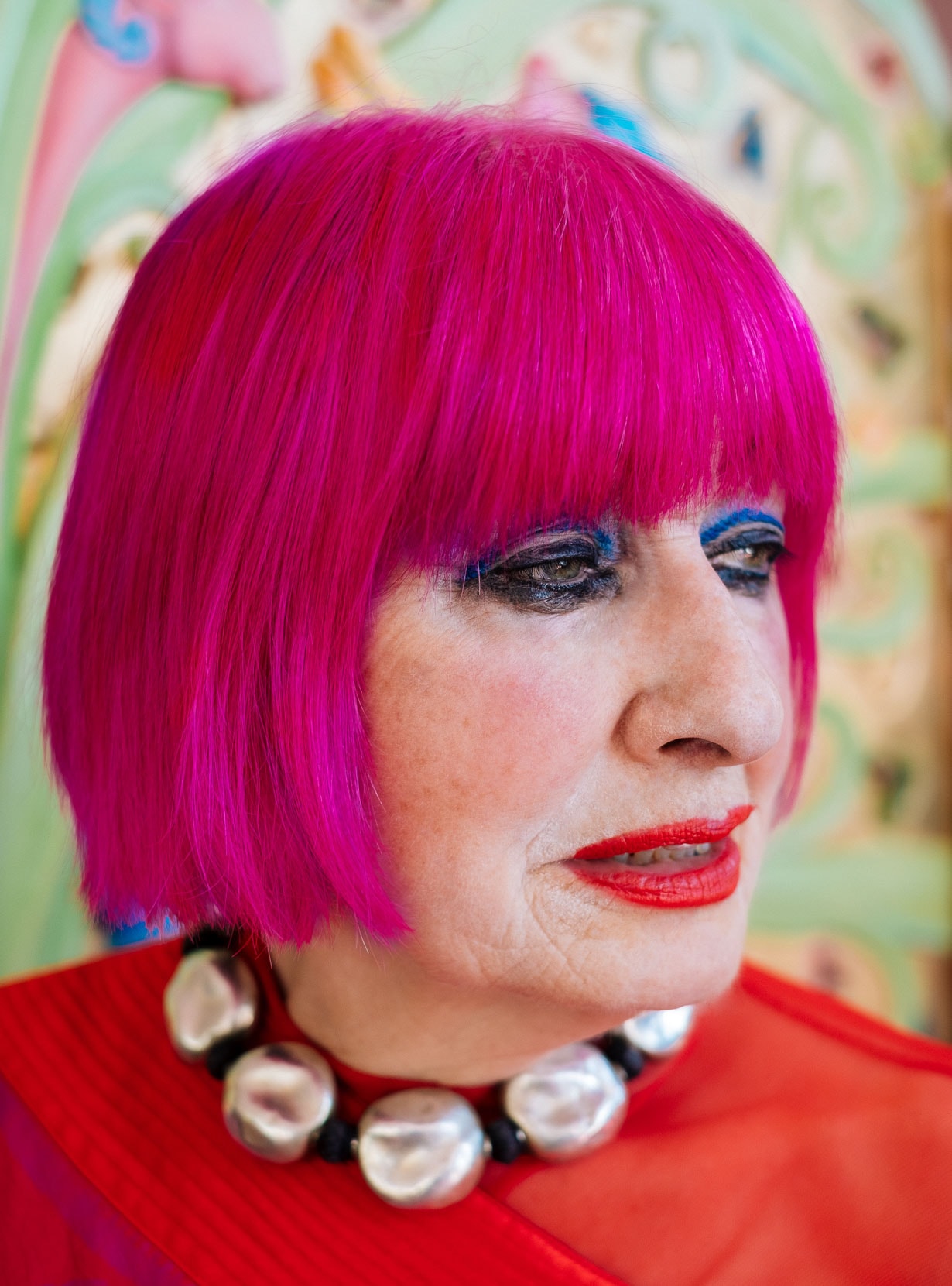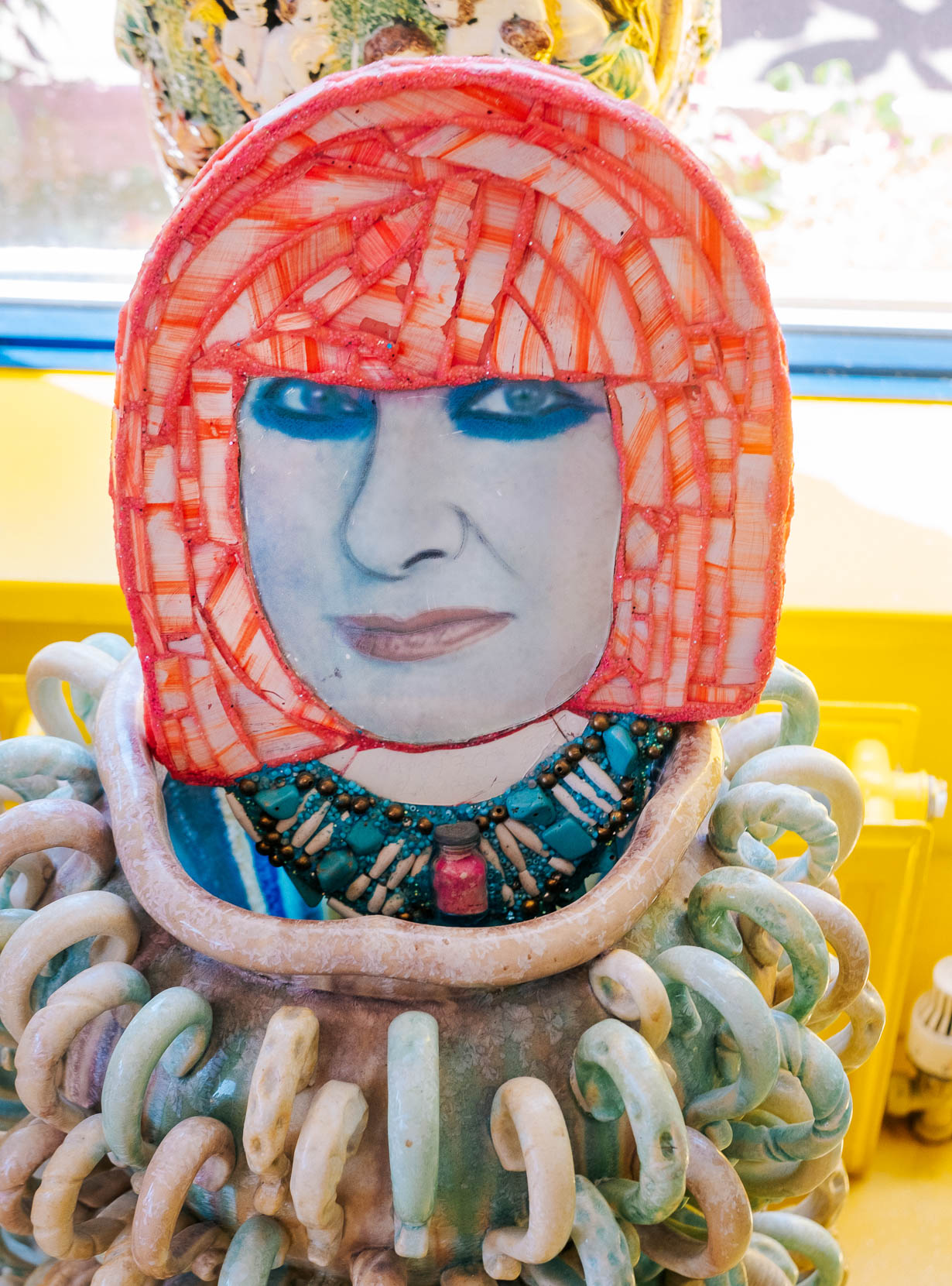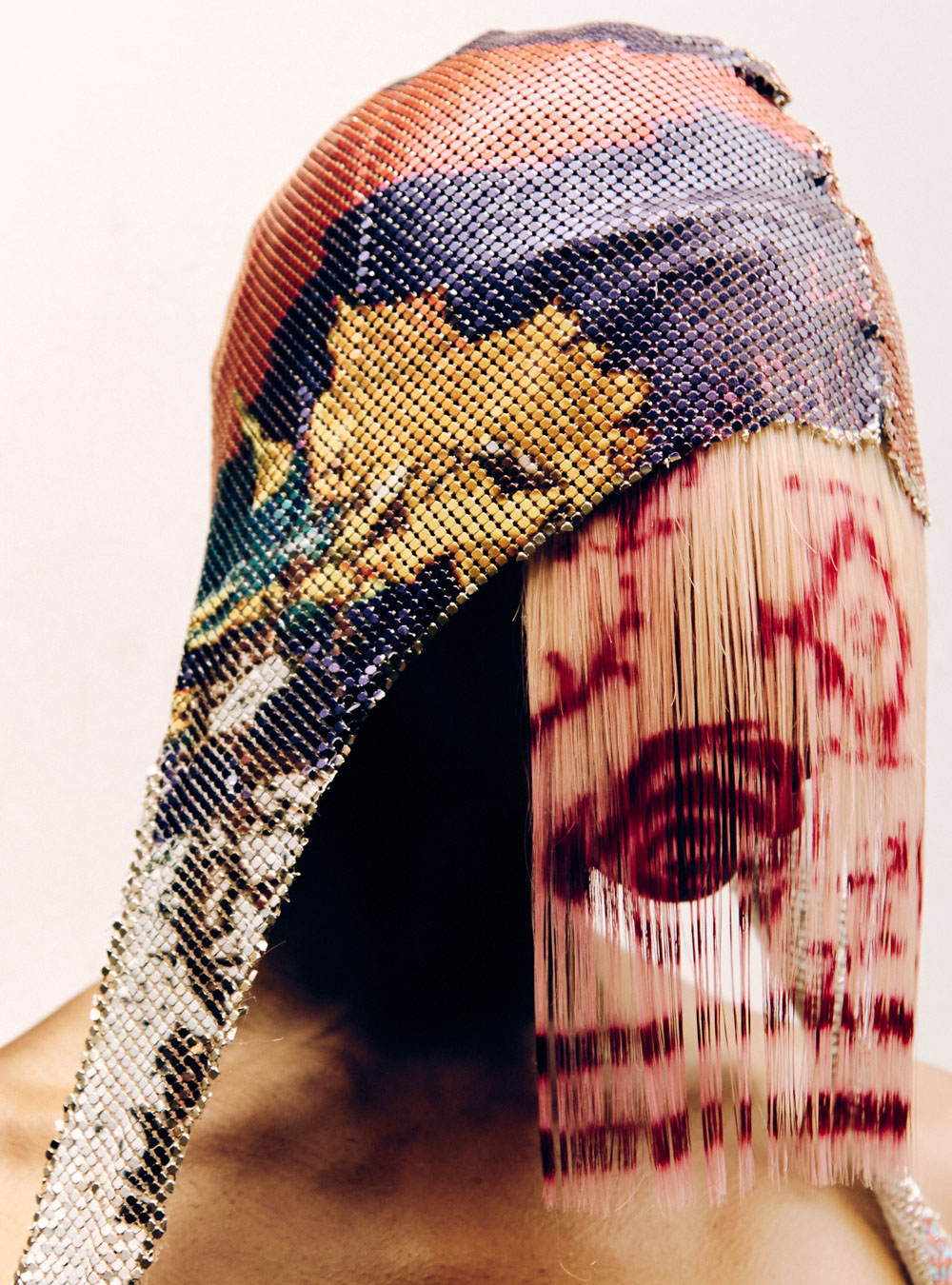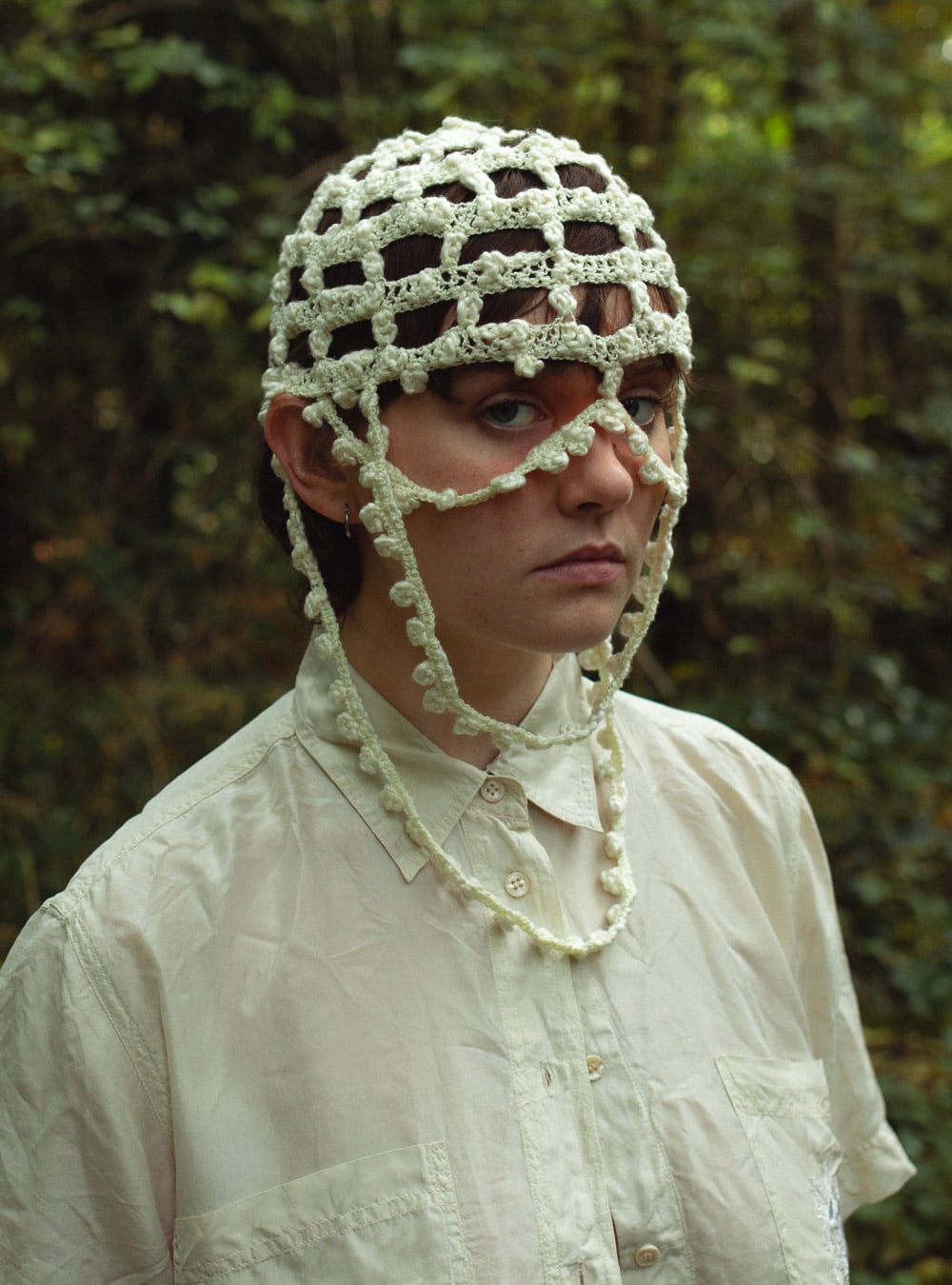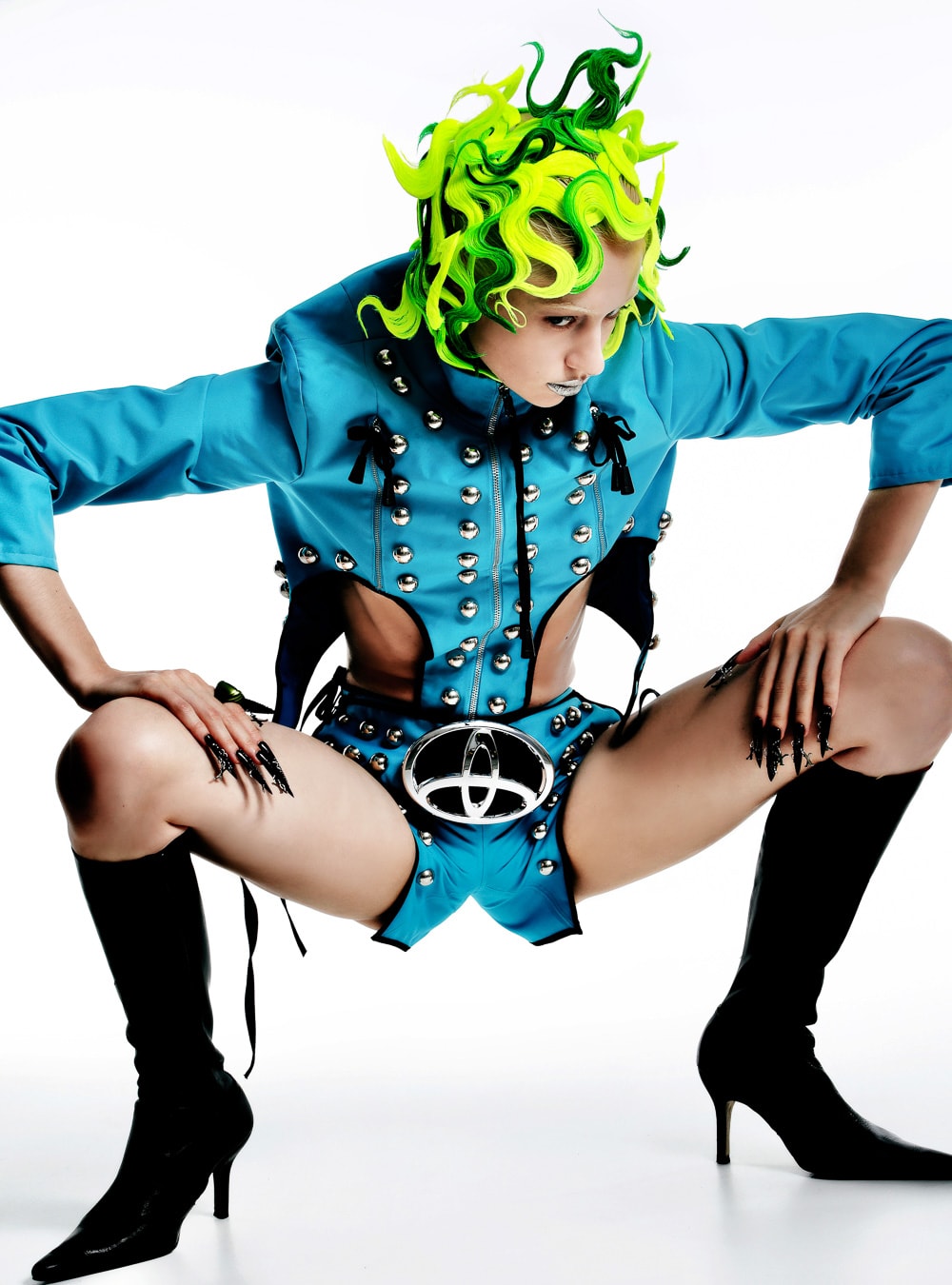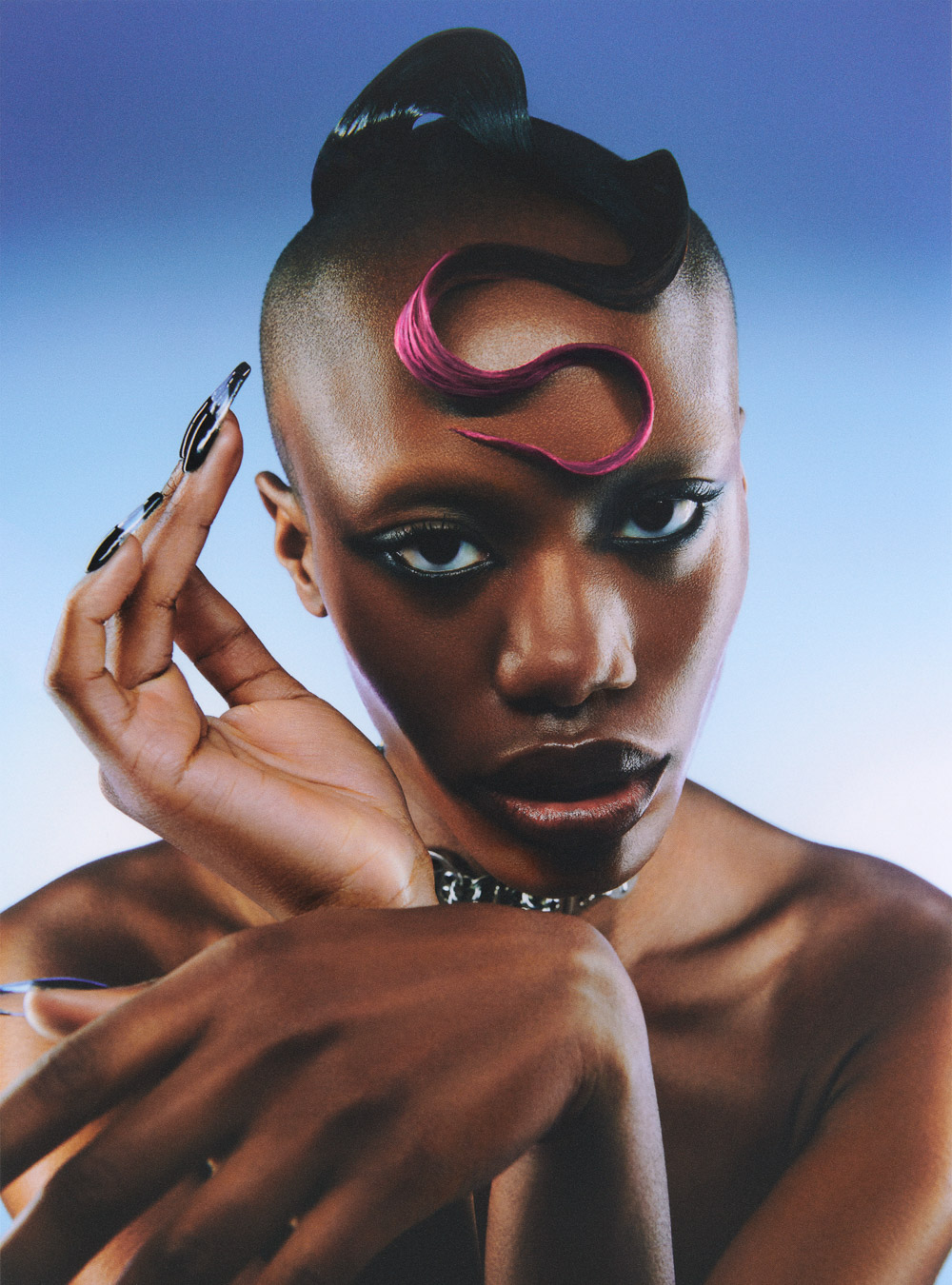PEOPLE: Dame Zandra Rhodes on being the ‘Princess of Punk’, her trademark pink bob and what her hair means to her
Photography: Aris Akritidis
Video: Panos Damaskinidis
Interview: Emma de Clercq
Special Thanks to Dame Zandra Rhodes
Dame Zandra Rhodes has built her world on colour. The iconic British designer, who launched her eponymous fashion brand almost fifty years ago, is known for her bold prints and vibrant technicolour designs. Nicknamed ‘The Princess of Punk’, Rhodes became an influential designer on the 1970s fashion scene, with clients including Princess Diana, Jackie Onassis, Elizabeth Taylor and Freddie Mercury. With her own distinctive look of theatrical make-up and trademark bob, dyed hot pink since the 80s, she is the the embodiment of her label’s designs – larger than life, and impossible to ignore.
We met Rhodes at her kaleidoscopic home and studio in South London, where she occupies the top floor of the Fashion and Textile Museum. Founded by Rhodes in 2003, the museum is dedicated to showcasing fashion and textile designers from the 1950s onwards. Fittingly, the building itself – a converted warehouse redesigned by Mexican architect Ricardo Legorreta – is painted a vibrant orange and pink. We spoke to Rhodes about her colourful hair history, and what her hair means to her.
Your world is filled with colour. What is it about colour that draws you in? I think that colour in general makes one feel happy, rather than sad. I don’t feel very special when I wear black, it doesn’t define me as a person. Colour also diverts from other things, so they’re not going to notice if my manicure isn’t perfect, or other things about me, so that’s always a good saving grace!
What first inspired you to colour your hair? I remember in the 70s, Vidal Sassoon brought out coloured wigs. I wore a green wig and felt really good in it, but I did not wish to have my head pinched – it was basically like wearing a tight hat all the time. So I went into Vidal Sassoon and asked if they would bleach my hair. They looked at my hair – which was dark brown in those days – and said no. Then I went to Leonard (Lewis, also known as ‘Leonard of Mayfair’) and together with Leonard we started doing streaks. I took my fabric dye in, because I thought – if you can dye a sheep, then you can dye hair! So we used the green dye that I had for dyeing fabrics. Of course it came off on everything…
“I’ve found that my hair opens a lot more doors than it closes”
Which other colours did you try before you settled on your (now signature) pink? Pink is fabulous – it’s a very happy colour, and it doesn’t take much upkeep. I only need to do it about once a month. During the 70s I experimented a lot – I wore it longish, tried streaks of purple, streaks of green, green with little feathers on the tips…
Then in 1979, I went to China as one of the first groups of tourists. There was no colour anywhere – everything was uniform, navy blue. When I came back to do a collection, I thought to myself, ‘Red China!’ I dyed my hair pink to commemorate the occasion, and it’s been pink ever since.
The 70s also marked the start of punk, during which brightly dyed hair became a very visual symbol of rejecting societal norms. Was this tied in with your decision to start colouring your hair? For me, I don’t think it had that much to do with punk. I feel like punk was more to do with a definition of how your hair might have been cut. Like it was green but it might have been stiffer, or sticking out. I tried lots of experiments that went with the punk movement, but I don’t necessarily associate coloured hair with punk. This is softer really. I suppose I’ve always felt that, your hair and your face are as important, if not more important, than the clothes that you wear, because it’s your face to the public. I’ve always made sure that I’m fully made-up, and when I’ve got my hair looking right, I feel great. It’s a guarantee to feeling great.
I suppose with punk hair, colour was one aspect but the cut was another integral part. Whereas your cut is more elegant, in the style of a classic 20s bob. How did you land on this style? I’ve only gradually ended up with this slightly Vidal, slightly classic bob, probably because it’s very easy to keep. I’ve had my hair longer, I’ve had it in little knots, I had a very good period of wearing a sort of ‘bunny ears’ hairdo. I think I’ve ended up with this because at the moment, my work is so busy, and so frantic, that I tend to be… I don’t want to say ‘lazy’, but it’s gradually just got shorter and shorter. I don’t recollect ever having ‘bad hair days’ as people refer to them, probably because I keep to the same style!
In terms of people’s reactions to your hair, do you notice a difference now compared to when you first started colouring it in the 70s? When I first started dyeing my hair, and I was quite a big name in New York, I actually went to a hair company and said, ‘would you be interested in maybe producing hair dyes, or a product in my name?’ And the woman said, ‘I hope you’ll forgive me for saying this, but a person with dyed hair has other implications…’ So anyway, it never got done. Coloured hair is not at all unusual now… I’m going to feel quite ordinary soon!
Brightly coloured hair may be commonplace in the UK – but it’s not necessarily the same in other countries and cultures. Have you ever been to a place where people have been really shocked by your bright hair? Actually, I’ve found that a lot of the time, my hair opens a lot more doors than it closes. The most interesting place I’ve found this is India. Pink is the navy blue of India! I’ve been into the wilds of the countryside, and little old ladies who might be making pots, or cooking in their courtyards, have come over and they always want to touch my hair. It’s quite amazing! So I’ve been let into all sorts of places that people wouldn’t usually be let in, because they’re intrigued.
Do you think it could be because bright primary colours evoke something childlike and playful in us? I like that theory! For me, it’s as simple as – I know that I wouldn’t like to be a little grey-haired old lady, so I’m better off being a little pink-haired old lady!
Pink as a colour has quite a strange and complicated gender history – at some point it overwhelmingly became associated exclusively with femininity. Although this notion – of certain colours being assigned to certain genders – is now finally being rejected more and more.
What has been your experience of this, both as an individual and a designer? I think, when people come to me personally, it’s because they want a Zandra Rhodes dress, but they might not want to wear it in the brightest of pink. They might want it in sky-blue. They’re coming to me because they want a dress that is identifiable for them but not to be an overwhelming statement. I think that I’m in a very lovely position, of people enjoying it and not being shocked any more. I’ve never found that I’ve identified colours with genders, I know people do… but now I find that they associate pink with me, which is quite an honour!
- ANTHROPOLOGY OF HAIR
- ANTHROPOLOGY OF HAIR
- ANTHROPOLOGY OF HAIR
- ANTHROPOLOGY OF HAIR
- ANTHROPOLOGY OF HAIR
